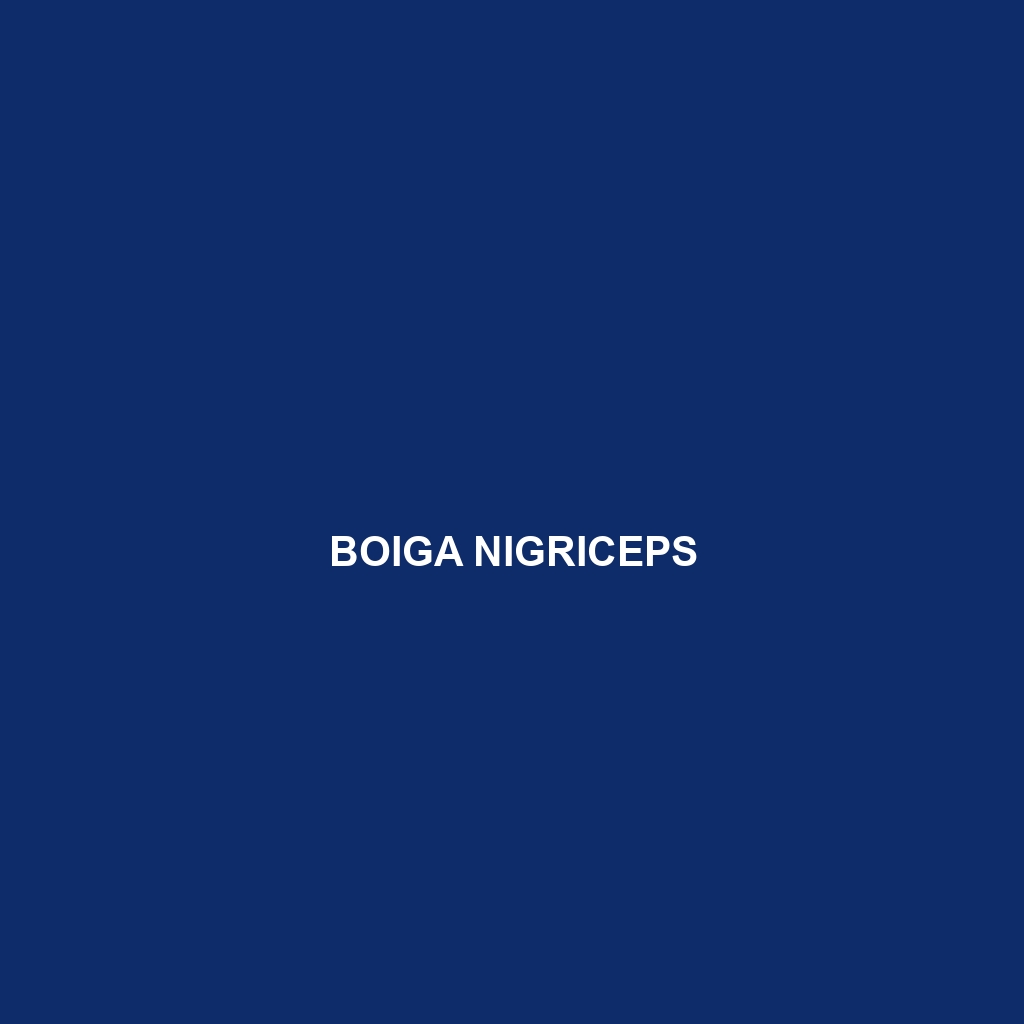Species Description: Boiga nigriceps
Common Name: Boiga nigriceps
Scientific Name: Boiga nigriceps
Habitat:
Boiga nigriceps, commonly known as the black-headed cat snake, is primarily found in tropical regions of Southeast Asia, specifically in countries such as Malaysia, Indonesia, and Thailand. This species prefers warm, humid environments, often inhabiting lowland rainforests, secondary forests, and mangrove swamps. The snake is typically seen in both arboreal and terrestrial settings, utilizing trees and shrubs for shelter and hunting.
Physical Characteristics:
The black-headed cat snake can grow to an average length of 1.5 to 2 meters (5 to 6.5 feet). It is distinguished by its striking coloration: a dark, glossy black head, contrasting with a slender, yellow to orange-brown body that features distinctive black or dark brown banding. Their elongated shape and sharp, narrow snout contribute to their unique appearance. These physical traits not only aid in camouflage but also make them easily recognizable among other species.
Behavior:
Boiga nigriceps is primarily nocturnal, exhibiting active hunting behaviors at night. This species is known for its agility and climbing prowess, often found in trees searching for prey. It is non-aggressive towards humans but will defend itself if threatened. The snake can often be seen basking during the early morning hours and is known to exhibit a characteristic “head bobbing” behavior when agitated. Its secretive nature often leads to it being mistaken for other, more venomous species in its habitat.
Diet:
The diet of Boiga nigriceps mainly consists of small vertebrates, such as birds, frogs, and lizards. This snake employs a method of constriction to subdue its prey before consumption. Its feeding habits are predominantly nocturnal, aligning with its active hunting behaviors at night. The ability to hunt a diverse range of small animals ensures that it plays a vital role in controlling local populations of its prey.
Reproduction:
Boiga nigriceps breeds during the warmer months of the year, typically between April and August. The female lays clutches of around 5 to 12 eggs, which she will incubate in a secluded location until they hatch. The hatchlings are independent from birth, resembling miniature adults with similar coloration and patterns. Maternal care is limited post-hatching, as the young are capable of hunting shortly after emerging from their eggs.
Conservation Status:
Currently, Boiga nigriceps is listed as “Least Concern” on the IUCN Red List, indicating that it does not face immediate threats to its population. However, habitat destruction and illegal wildlife trade pose potential risks that could impact this species in the future. Conservation efforts are essential to ensure sustainable habitats remain for this unique snake.
Interesting Facts:
1. Boiga nigriceps is often mistakenly identified as a venomous species due to its striking coloration and behavior.
2. This snake has been observed exhibiting a unique behavior called “broadside display,” where it flattens its body to appear larger when threatened.
3. Out of its various hybrids, the black-headed cat snake is one of the most visually distinctive, making it popular among reptile enthusiasts.
Role in Ecosystem:
As a predator, Boiga nigriceps plays a crucial role in maintaining the balance of its ecosystem by controlling the populations of various small vertebrates. Its presence indicates a healthy, functioning environment, as it contributes to the biodiversity of its habitat. Moreover, it serves as prey for larger predators, thus occupying a vital position in the food chain.
